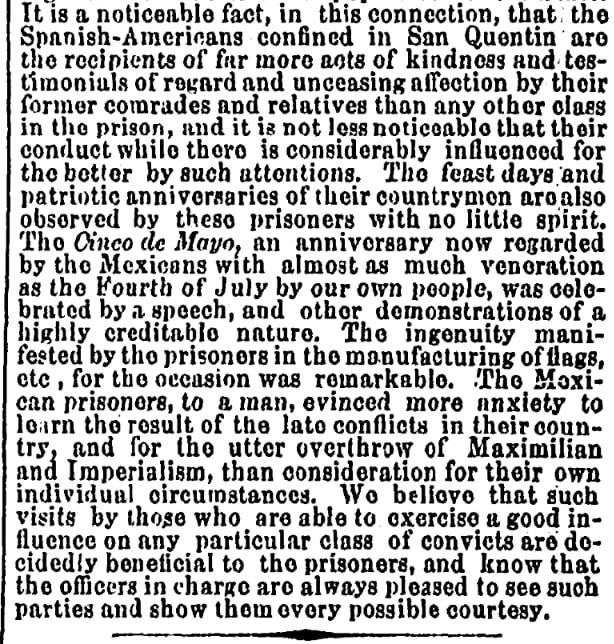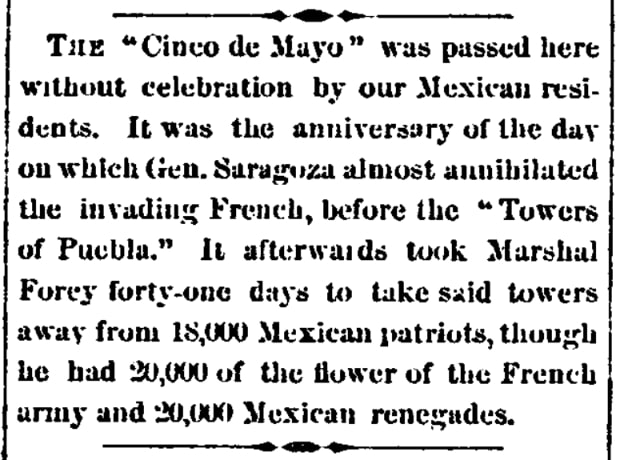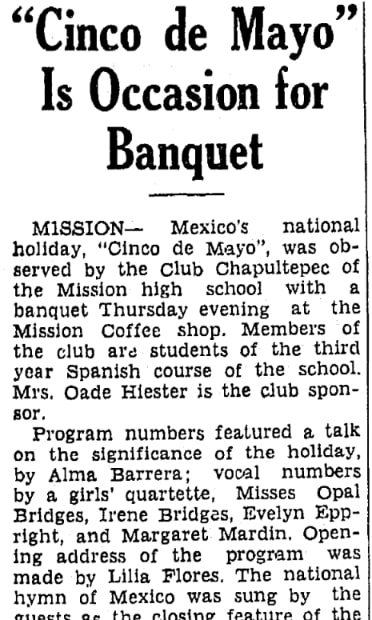Introduction: In this article – in celebration of Cinco de Mayo today – Gena Philibert-Ortega gives three facts about the holiday you may not know. Gena is a genealogist and author of the book “From the Family Kitchen.”
Today is Cinco de Mayo (May 5th). Are you celebrating? Cinco de Mayo has become largely a food holiday and a good excuse to enjoy some tacos – but there is a history behind the day and a lot of myths. Here are three facts about Cinco de Mayo.

Fact #1: Cinco de Mayo Is NOT Mexican Independence Day
Let’s start with the one myth that most Americans believe: that Cinco de Mayo is Mexican Independence Day. However, Cinco de Mayo, or May 5th, commemorates an 1862 battle during the Franco-Mexican War. During the Battle of Pueblo, the underdog Mexican army were victorious over the larger French army. The day in Mexico is one of patriotic pride.
So, why do so many believe Cinco de Mayo is a celebration of Mexican independence from Spain? I think it has to do with how Americans understand the festivities of the holiday based on what they are familiar with, especially the celebration of the Fourth of July.
For example, in 1867, a newspaper article in the Weekly Alta California discussed a Mexican consulate visit to the San Quentin Prison. In that article a Cinco de Mayo celebration was described.

This article reported:
The Cinco de Mayo, an anniversary now regarded by the Mexicans with almost as much veneration as the Fourth of July by our own people, was celebrated by a speech, and other demonstrations of a highly creditable nature. The ingenuity manifested by the prisoners in the manufacturing of flags, etc., for the occasion was remarkable.
It’s possible that over the years, as Cinco de Mayo was repeatedly likened to America’s Independence Day, those not familiar with the holiday’s origin assumed it was Mexican Independence Day.
If Cinco de Mayo isn’t Mexican Independence Day, then what day is? Mexican Independence Day is September 16th, the day that a Catholic priest named Father Hidalgo called for the independence of Mexico from Spain in 1810.
Fact #2: The First Celebration of Cinco de Mayo in the U.S. Was in 1863
The first celebrations of the 1862 victory were not too long afterward: in 1863. Californians were the first to celebrate, with food and drink to show support for their southern neighbors.
You can find articles about Cinco de Mayo in Spanish-language and English-language U.S. newspapers that mentioned Cinco de Mayo in the late 19th century. (See GenealogyBank’s Hispanic American Newspaper Archives.) Celebrations – and even the lack of celebrations – were noted.

Fact #3: America Might Celebrate Cinco de Mayo More than Mexico
In America, Cinco de Mayo has become a Hispanic cultural holiday, with less emphasis on the true roots. In fact, this holiday seems to be celebrated more in America than in many parts of Mexico. Cinco de Mayo in America is now a commercialized holiday with emphasis on Mexican food and drink.
Search Tip: When searching for a phrase like “Cinco de Mayo,” put quote marks around the phrase in the “Include These Keywords” box in GenealogyBank’s search engine.
One of the benefits of historical newspapers is the ability to see how someone or something has changed over time, such as the celebration of a holiday, giving us examples of what our ancestors experienced.

Happy Cinco de Mayo!
After you read accounts of Cinco de Mayo in historical newspapers, take some time to search for recipes to enjoy on May 5. Search terms like “taco” “tostado” and “burrito” may give you some dinner ideas.
Explore over 330 years of newspapers and historical records in GenealogyBank. Discover your family story! Start a 7-Day Free Trial
Note on the header image: Cinco de Mayo parade in Saint Paul, Minnesota, 2007. Credit: Rena Dehler; Wikimedia Commons.
